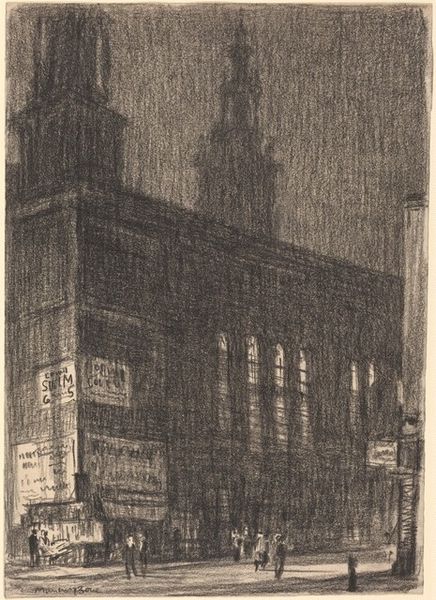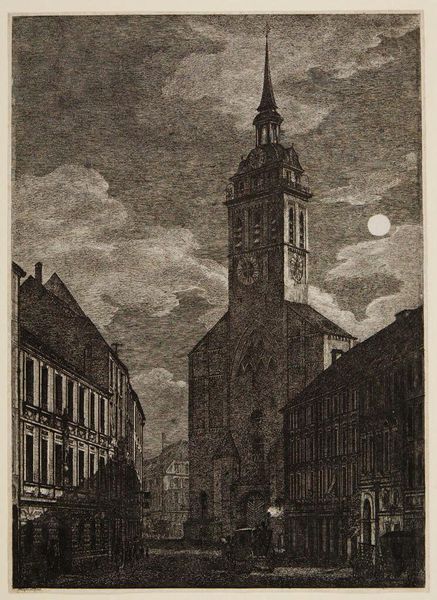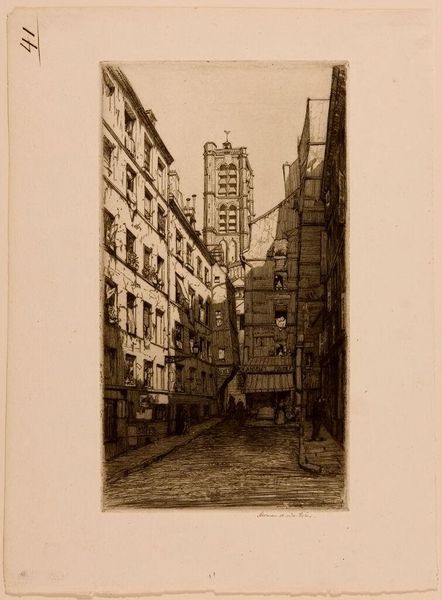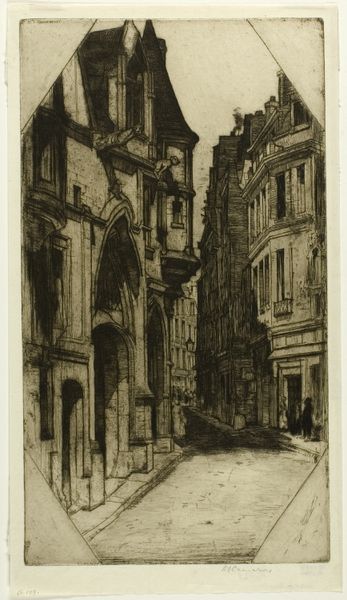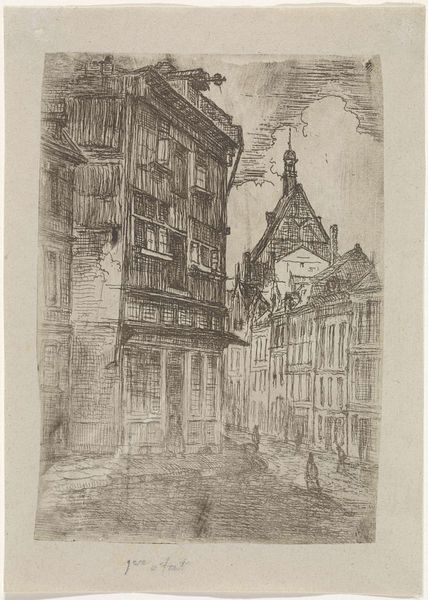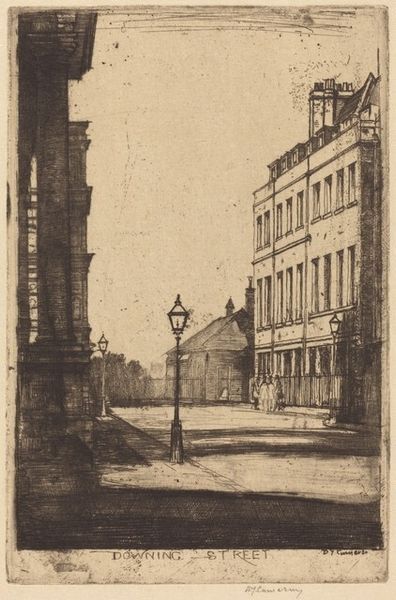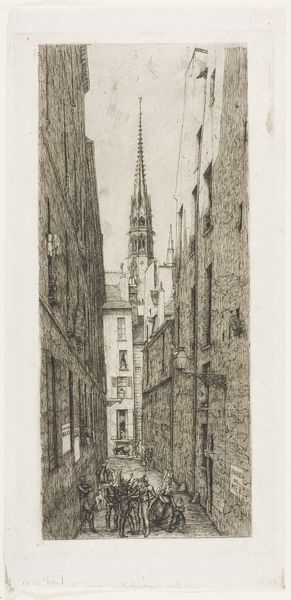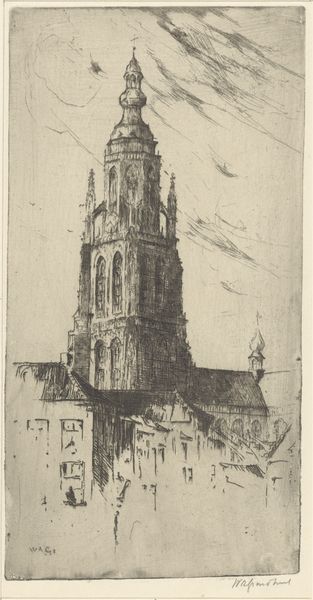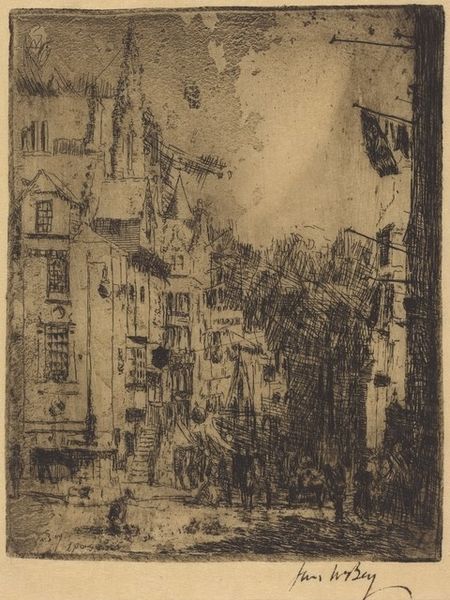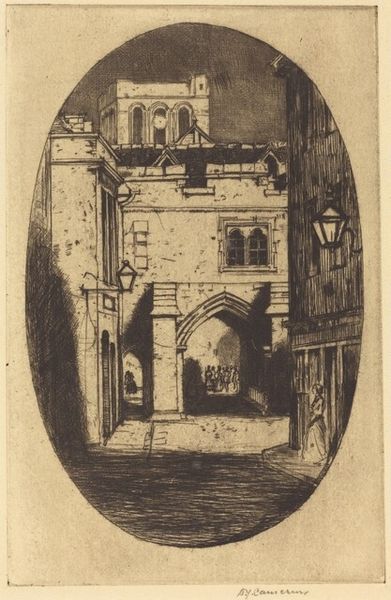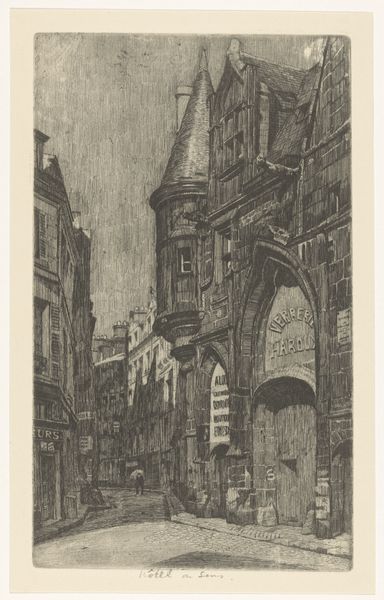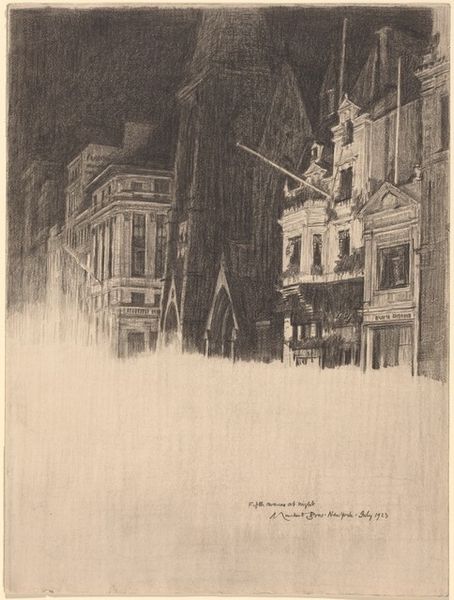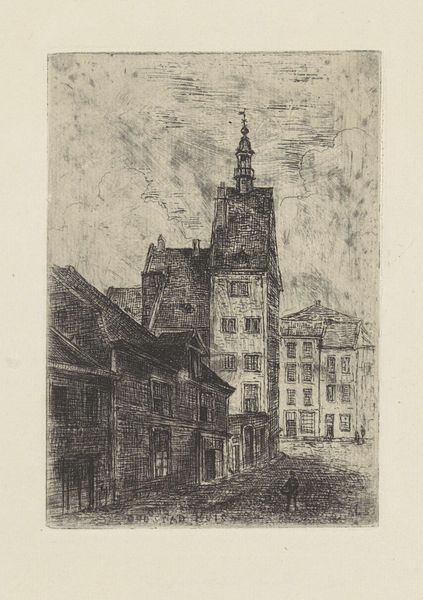
drawing, pencil, graphite
#
pencil drawn
#
drawing
#
pencil
#
graphite
#
cityscape
#
realism
Dimensions: overall: 25.7 x 17.8 cm (10 1/8 x 7 in.)
Copyright: National Gallery of Art: CC0 1.0
Curator: Muirhead Bone’s pencil drawing, titled "Tower, Auxerre, Night," plunges us into a dramatically lit cityscape. It's incredibly evocative. Editor: Yes, it feels haunted. The looming tower against that heavy, textured sky creates a strong sense of unease, almost Gothic. There’s such stark contrast between the dark sky and the highlights catching on the architecture. Curator: Absolutely. The drawing seems to embody the anxiety of the fin de siècle, where rapid urban development collided with older, perhaps unwanted, power structures. You get a feel for the monumental weight and authority of the tower itself, contrasting with the domestic scale of the building to its left. Editor: Visually, the tower seems like a vestige from the past—an echo of an older power dominating the 'modern' buildings beside it. But I wonder about its symbolism. Is it a phallic symbol or a more protective marker? The image almost dares us to interpret what that looming shape suggests about power. Curator: Precisely. Consider Bone's perspective; writing about such societal power imbalances, alongside anxieties over class and gender at that time, it feels natural for this image to surface anxieties surrounding the masculine and phallic presence, looming above this city's existence. And this tension, the weight of historical male power structures—manifests in that striking silhouette. Editor: It also occurs to me that towers, particularly those that reach skyward like this, are so often markers of civic pride or of a reach toward something divine or transcendent. Yet the deep shadows surrounding the tower make it feel… almost ominous. Curator: Agreed. While perhaps conceived in pride, it feels much more connected with surveillance and control now. Bone's "Tower, Auxerre, Night" becomes more than just a drawing of a building; it is a testament to the complicated intersectional dialogue that occurs as past power structures meet present life. Editor: Bone captured the moment—not just an image of place but of a pervasive mood—revealing layers of historical weight and psychological complexity embedded within the city itself.
Comments
No comments
Be the first to comment and join the conversation on the ultimate creative platform.
